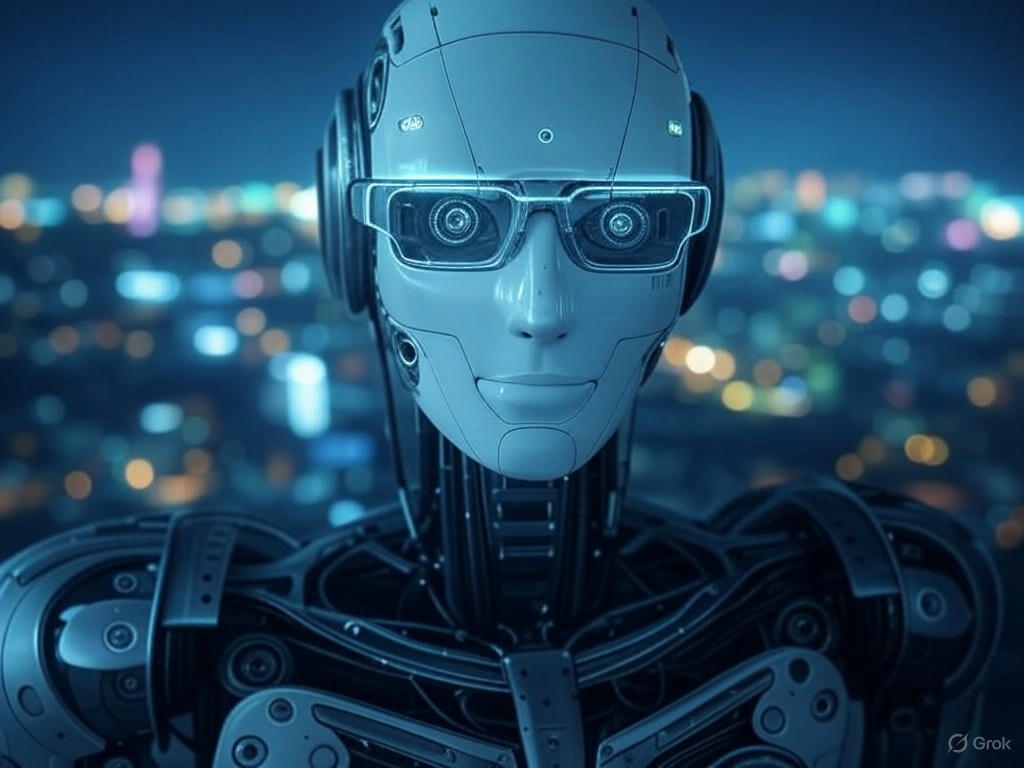
Navigating the AI Frenzy: Software Development's Latest Shifts and Innovations in 2025
As we dive into the dynamic world of software development on November 20, 2025, the industry is buzzing with debates, breakthroughs, and bold predictions. From overhyped AI investments to real-world applications in manufacturing and cybersecurity, today’s news highlights how software is evolving at a breakneck pace. This article explores key stories that are shaping the future, drawing from recent reports that underscore the opportunities and risks in tech. With AI at the forefront, developers and businesses are grappling with bubbles, ethical concerns, and cost-saving strategies, all while pushing the boundaries of what’s possible.
The AI Bubble Debate: Risks and Realities in Software Investment
The software development landscape is currently dominated by discussions around artificial intelligence (AI), particularly the potential for overinvestment in large language models (LLMs). According to a recent article from Ars Technica, Hugging Face CEO Clement Delangue warned that we’re in an “LLM bubble,” where excessive hype around these models could lead to misallocated resources. This isn’t a blanket critique of AI as a whole, but rather a cautionary tale about focusing too narrowly on LLMs without considering broader applications. Read more about the LLM bubble concerns.
This bubble talk contrasts sharply with Nvidia’s latest financial performance, as reported by TechCrunch. The company announced a record $57 billion in revenue, largely driven by its data center business, which powers AI and software development tools. This upbeat forecast has quieted some of the bubble speculation, suggesting that AI’s growth is more than just hype—it’s backed by tangible demand from enterprises building complex software systems. For software developers, this means a surge in tools for machine learning and data processing, but it also raises questions about sustainability. If investments continue to flood into AI infrastructure without addressing core software challenges, we could see inefficiencies that delay project timelines and inflate costs.
On the flip side, the risks extend beyond LLMs into manufacturing and other sectors. Ars Technica’s piece points out that while AI investments in areas like automated production lines are less clear-cut, they could lead to overproduction or mismatched tech stacks. Software developers working on these integrations must navigate this carefully, ensuring that their code is scalable and adaptable. This is where strategic planning becomes crucial, as overlooking competitor dynamics or risk factors could turn promising projects into costly failures.
AI’s Role in Manufacturing: Cutting Costs and Boosting Efficiency
Shifting gears to practical applications, one of the most exciting developments in software is how AI is transforming manufacturing processes. TechCrunch recently covered Cavela, a startup that raised $6.6 million to deploy AI agents aimed at reducing product manufacturing costs by an average of 35%. This innovation isn’t just about hardware; it’s deeply rooted in software development that automates decision-making, optimizes supply chains, and predicts potential issues before they arise. Dive into Cavela’s funding details.
For software engineers, this means creating intelligent systems that integrate AI with existing workflows, such as predictive analytics algorithms that adjust production based on real-time data. The implications are profound: brands can dodge pre-tariff expenses by streamlining operations, but only if the underlying software is robust and user-friendly. This highlights the need for high-quality development practices that emphasize cost-effectiveness without sacrificing performance. In an era of rising global tariffs, software that delivers these efficiencies could be a game-changer for businesses looking to stay competitive.
However, implementing such AI-driven software isn’t without challenges. Developers must contend with data privacy regulations, integration complexities, and the need for continuous updates. As manufacturing becomes more digitized, the demand for skilled teams to handle these tasks is growing, underscoring the importance of outsourcing strategies that bring in expertise while keeping costs low. This approach can help startups and growth-stage firms focus on innovation rather than getting bogged down in development hurdles.
Cybersecurity Predictions: Lessons from “Ghost in the Shell”
Another fascinating angle in software development is cybersecurity, where pop culture is meeting reality. TechCrunch’s analysis of the classic anime “Ghost in the Shell” shows how its 1995 storyline eerily predicted modern threats, such as governments using hackers for espionage. The film’s villain, the Puppet Master, foreshadowed a world of interconnected systems vulnerable to sophisticated attacks, at a time when the internet was still in its infancy. Explore the cybersecurity parallels.
This narrative has real implications for today’s software developers, who are now building defenses against state-sponsored cyber threats. From encryption protocols to intrusion detection systems, the software we create must anticipate evolving risks. The article emphasizes that “Ghost in the Shell” highlighted the blurred lines between human and machine intelligence, a concept that’s increasingly relevant as AI integrates into cybersecurity tools. Developers are thus tasked with designing software that not only protects data but also adapts to new attack vectors, making predictive modeling and ethical AI a priority.
In practice, this means incorporating lessons from historical predictions into modern development cycles. For instance, software for espionage prevention might involve advanced neural networks that learn from past breaches, ensuring that systems are proactive rather than reactive. As cyber threats grow more complex, the software industry must prioritize security-by-design principles, which could involve collaborative efforts to share knowledge and resources.
While not directly related to software, it’s worth noting NASA’s recent announcement about the interstellar comet 3I/ATLAS, as reported by Ars Technica. This discovery underscores the interdisciplinary nature of tech, where software plays a key role in data analysis and space exploration. Tools for processing astronomical data rely on robust software frameworks, highlighting how development skills extend beyond earthly applications. Learn more about the comet.
As we wrap up this exploration of software development’s latest news, imagine a world where innovative ideas flourish without the weight of operational chaos. Picture founders channeling their creativity into groundbreaking AI tools, secure cybersecurity frameworks, and efficient manufacturing software, all while sidestepping the pitfalls of bubbles and inefficiencies. That’s the essence of turning bold visions into reality—offering a streamlined journey for creators, whether they’re tech-savvy or not, to build and scale without unnecessary risks.
About Coaio
Coaio Limited is a Hong Kong-based tech firm that specializes in outsourcing software development and assembling skilled teams in Vietnam. We offer comprehensive services including business analysis, competitor research, risk identification, design, development, and project management, delivering cost-effective, high-quality software solutions for startups and growth-stage companies. With a focus on user-friendly designs and efficient tech management, we serve clients in the US and Hong Kong, helping them navigate complex projects with minimal hassle and maximum results. Whether you’re dealing with AI integrations or cybersecurity challenges, our expertise can streamline your development process, allowing you to concentrate on your core vision.
 English
English
 Français
Français
 Español
Español
 廣東話
廣東話
 中文
中文
 日本語
日本語
 한국어
한국어
 العربية
العربية
 Deutsch
Deutsch
